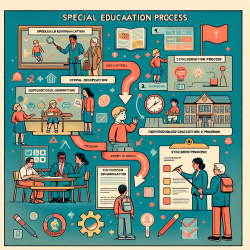Introduction
In the world of global health, particularly in low- and middle-income countries (LMIC), the challenge of ensuring post-operative follow-up is significant. This is due to a myriad of factors, including logistical barriers and limited access to healthcare resources. However, recent research, such as the study titled "Assessment of communication technology and post-operative telephone surveillance during global urology mission," highlights innovative approaches to overcoming these challenges. This blog will explore how practitioners can leverage mobile technology to improve follow-up compliance and patient outcomes, drawing from the study's findings.
The Study: A Closer Look
The study conducted by Rapp et al. focused on improving post-operative follow-up in Belize through the use of communication technology. The researchers implemented a pilot program that included a 6-week post-operative telephone interview with patients who underwent surgery during international medical missions. The results were promising: 51% of patients complied with the telephone follow-up, and issues requiring medical intervention were identified in 17% of these cases. The cost per patient interview was approximately $10 USD, highlighting the cost-effectiveness of this approach.
Key Findings and Implications
- Widespread Mobile Phone Usage: The study found that 89% of patients had access to mobile phones, making it a viable tool for post-operative follow-up.
- Improved Compliance: Telephone interviews increased compliance with follow-up appointments, allowing for timely identification and management of post-operative issues.
- Cost-Effectiveness: The approach was not only effective but also affordable, with a low cost per patient interview.
Implementing the Findings in Practice
For practitioners looking to improve their follow-up processes, the study offers valuable insights. Here are some steps to consider:
- Leverage Mobile Technology: Utilize mobile phones for follow-up interviews, especially in regions where access to other forms of communication is limited.
- Provide Comprehensive Patient Education: Ensure patients understand the importance of follow-up and are aware of the follow-up process.
- Record Secondary Contact Information: Collect additional contact details, such as phone numbers of family or friends, to increase the likelihood of reaching patients.
Encouraging Further Research
While the study provides a strong foundation, further research is needed to explore the efficacy of telephone interviews in different contexts and with diverse patient populations. Practitioners are encouraged to conduct their own studies to assess the impact of mobile technology on follow-up compliance and patient outcomes.
Conclusion
The integration of mobile technology into post-operative care represents a promising avenue for improving patient outcomes and ensuring compliance with follow-up appointments. By adopting these strategies, practitioners can enhance their practice and contribute to better health outcomes for patients in LMIC and beyond.
To read the original research paper, please follow this link: Assessment of communication technology and post-operative telephone surveillance during global urology mission.










